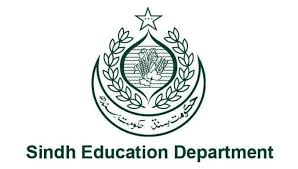Sindh’s Education Budget 2025-26: A Missed Opportunity or a Turning Point?

Education is the cornerstone of sustainable development and the engine of human capital growth. In Sindh, where nearly half the population is under 16, it holds the key to breaking the vicious cycle of poverty and underdevelopment. While the Sindh Budget 2025-26 brings education into the spotlight with a notable increase in funding, persistent gaps in access, quality, and equity threaten to derail progress. Unless addressed urgently, these cracks may leave yet another generation behind.
With a population of over 55 million, Sindh is home to Pakistan’s youngest demographic profile 30% of its citizens are between the ages of 5 and 16, and 80% are under 40. Yet, despite this demographic advantage, the province’s education system struggles under the weight of chronic challenges: a growing number of out-of-school children, poor learning outcomes, stark urban-rural disparities, gender-based exclusion, and an education model poorly aligned with labour market needs and climate realities.
This year’s allocation of Rs613.36 billion for education up from Rs454 billion last year appears ambitious on paper. Of this, Rs524.32 billion is earmarked for service delivery, and Rs89.04 billion for development. Rs13.5 billion has been allocated to the Sindh Education Foundation (SEF), with Rs2.5 billion designated for madressah reforms. These investments signal intent, but without a cohesive strategy and robust implementation, the province risks pouring money into a leaky system.
The Scale of the Problem
According to the Economic Survey FY25, Sindh’s gross primary enrolment rate is just 71%, trailing the national average of 84%, and even lagging behind Balochistan at 72%. Enrolment in middle schools drops further to 54%. Nearly 47% of Sindh’s children are out of school second only to Balochistan.
The situation is especially dire in climate-vulnerable districts such as Dadu, Sanghar, Larkana, and Khairpur, where combined enrolment barely reaches 33%. Despite budgetary allocations for climate-resilient infrastructure, investment in flood protection and disaster recovery remains inadequate. The devastating floods of 2010 and 2022, which damaged over 20,000 schools, demonstrated the fragility of Sindh’s education infrastructure. Moving forward, investments must prioritize disaster-resilient school buildings, mobile classrooms, and early warning systems to ensure education continues through crises.
Rebuilding schools is not enough — they must be redesigned to withstand future disasters and equipped to meet the needs of displaced and vulnerable communities. Temporary learning centres, distance education tools, and psychosocial support for students should be central to any post-disaster education response. Schools with elevated structures, solar energy systems, and rainwater harvesting can also function as safe community hubs during emergencies.
Infrastructure and Inclusion Gaps
Beyond disaster vulnerability, basic school infrastructure in Sindh is lacking. Only 31% of schools have electricity, 58% provide drinking water, and 57% offer toilet facilities all below national averages.
Public-private partnerships, such as those implemented by SEF, have been introduced to address some of these issues. Initiatives like Adopt-a-School and Foundation-Assisted Schools have shown promise in improving learning outcomes. But while the Rs13.5 billion allocation to SEF is a positive step, systemic challenges remain. Equitable access, especially for girls and marginalised groups, continues to lag behind. Effective teacher training, transparent regulation, and strong community involvement are essential to ensure these partnerships deliver on their potential.
International models like Bangladesh’s BRAC schools offer valuable lessons community-driven oversight, gender-sensitive strategies, and strong accountability mechanisms are critical. Sindh must adapt such best practices to its own context, especially if it hopes to reach the most vulnerable children.
Learning outcomes paint a sobering picture. According to the 2023 Annual Status of Education Report (ASER), only 22% of Grade 5 students in rural Sindh can read a basic English sentence, and just 27% can do basic division. Unsurprisingly, private school students consistently outperform their peers in government schools. But the unchecked rise of private school fees, coupled with the absence of budgetary relief for essential school expenses like textbooks and stationery, continues to burden low-income families and push dropout rates higher.
Socioeconomic and Gender Disparities
The education landscape in Sindh is deeply stratified. Low-income families often resort to low-cost private schools or madressahs, which provide food and shelter, while others depend on poorly funded public schools. The Sindh Right to Free and Compulsory Education Act 2013 remains under-implemented, with glaring disparities based on geography, wealth, and gender.
Girls, in particular, face steep barriers: unsafe school environments, lack of female teachers, inadequate transport, and regressive social norms. Without targeted investment including stipends for girls, safer schools, transport facilities, and incentives for female teachers in rural areas the gender gap in education will persist.
Government action must go beyond policy frameworks. Conditional cash transfers, school meal programmes, and community-based schooling in remote areas can help level the playing field. Regulatory oversight of private institutions is also essential to ensure quality and affordability. A universal minimum education standard applied across public, private, and religious schools is vital to addressing systemic inequality.
Engaging religious and community leaders in advocating for education, especially for girls, is crucial for long-term change. Cultural transformation must accompany structural reform.
Opportunities Amid the Challenges
The 2025-26 budget includes some promising initiatives, such as decentralising education funds to over 34,000 government schools. In theory, this allows schools greater autonomy in managing their own operations. In practice, however, the success of decentralisation depends on accountability. Without robust monitoring systems, community oversight, and transparent audits, decentralised budgets risk being misused.
The failure of previous school management committees, particularly in rural areas, should serve as a cautionary tale. Strengthening headteacher capacity, empowering school councils, and using digital tools for oversight will be critical to ensuring this reform does not backfire.
There are also commendable provisions for inclusive education. The budget aims to double assistive device outreach for children with disabilities and increase monthly stipends, meals, and uniforms. But further progress requires specialised teacher training, accessible transportation, and school buildings designed with universal access in mind steps necessary to meet commitments under the UN Convention on the Rights of Persons with Disabilities.
Madressah reform is another focal point, with Rs2.5 billion set aside for improvements. With over 7,000 registered seminaries in Sindh, meaningful reform must include registration, regulation, and integration of madressahs into the mainstream education system. Including their students in national assessments will help track learning outcomes and promote consistency with national education standards.
The Way Forward: From Budgets to Bold Action
The Sindh education budget for 2025-26 offers a glimpse of ambition but ambition alone is not enough. Without structural reforms, clear accountability, and targeted action to address gender inequality, disaster vulnerability, and rural access, the province risks repeating past mistakes.
Financial allocations must be matched by political will and policy coherence. Investing in education is not just a budget line it is a long-term commitment to Sindh’s future. A generation of young people is waiting. The question is: will the system finally deliver?




